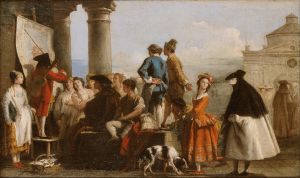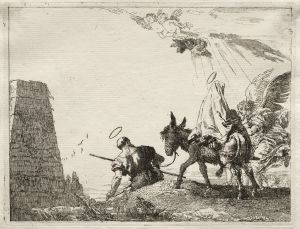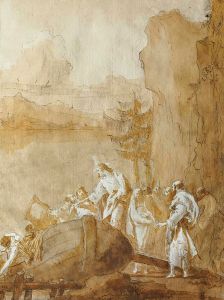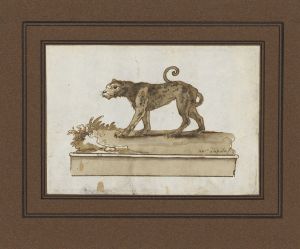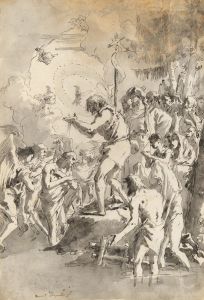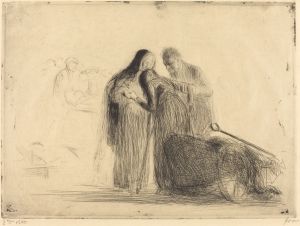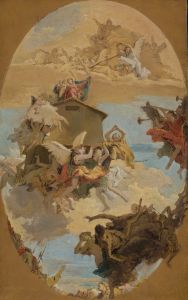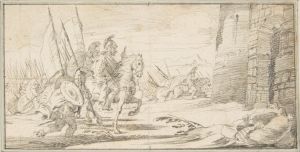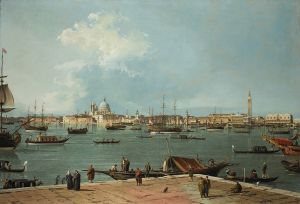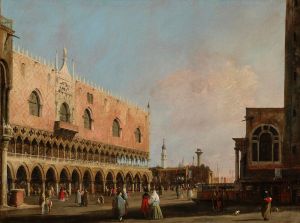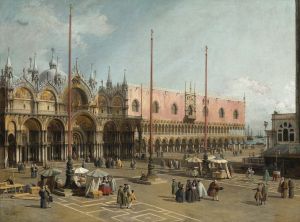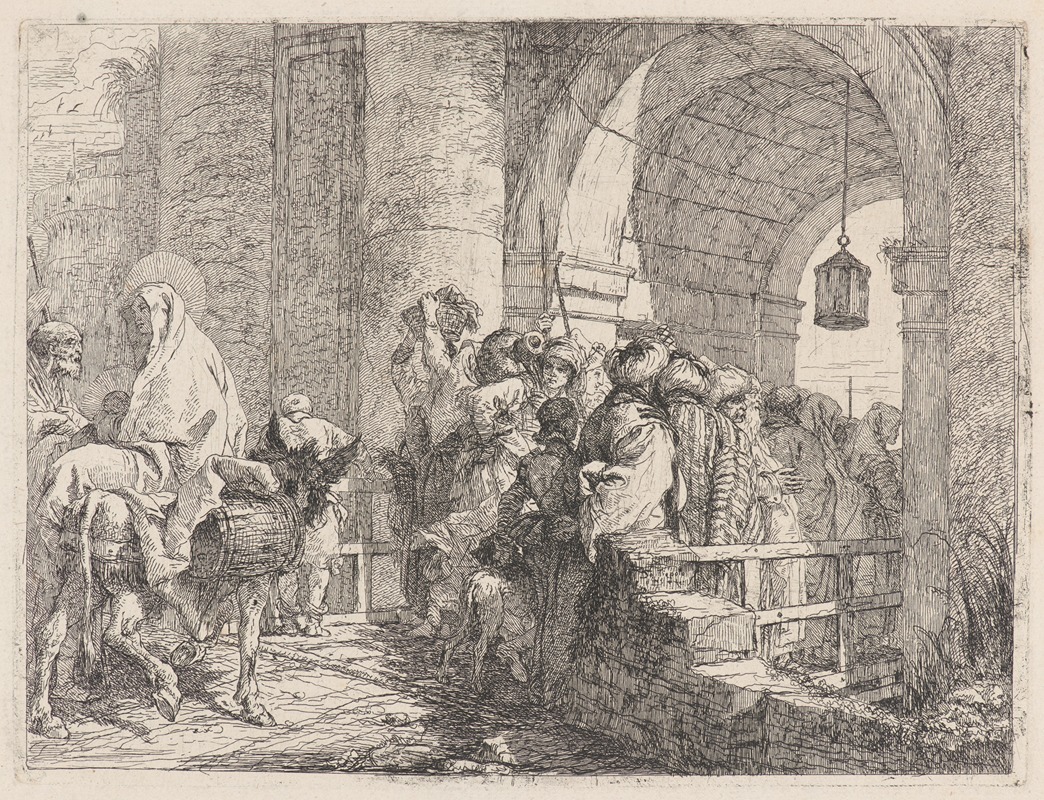
The Holy Family Arriving at a City Gate
A hand-painted replica of Giovanni Domenico Tiepolo’s masterpiece The Holy Family Arriving at a City Gate, meticulously crafted by professional artists to capture the true essence of the original. Each piece is created with museum-quality canvas and rare mineral pigments, carefully painted by experienced artists with delicate brushstrokes and rich, layered colors to perfectly recreate the texture of the original artwork. Unlike machine-printed reproductions, this hand-painted version brings the painting to life, infused with the artist’s emotions and skill in every stroke. Whether for personal collection or home decoration, it instantly elevates the artistic atmosphere of any space.
Giovanni Domenico Tiepolo's painting The Holy Family Arriving at a City Gate is a work by the Venetian artist, who was the son of the renowned Rococo painter Giovanni Battista Tiepolo. Domenico Tiepolo (1727–1804) was known for his narrative compositions, often infused with a sense of theatricality and vivid storytelling. This particular painting depicts a biblical scene featuring the Holy Family—Mary, Joseph, and the infant Jesus—arriving at the entrance of a city, a subject that aligns with Christian iconography and themes of pilgrimage and refuge.
The painting is executed in oil on canvas, a medium commonly used by Tiepolo, and showcases his skill in combining dynamic figures with architectural elements. The composition is marked by a sense of movement and interaction among the figures, as well as the use of light and shadow to create depth and focus. The city gate in the background serves as a symbolic threshold, emphasizing themes of transition and protection. The figures of Mary and Joseph are depicted with tenderness and humility, while the infant Jesus is portrayed as the central figure, radiating a sense of divine presence.
Domenico Tiepolo's style in this work reflects his ability to balance the grandeur of his father's influence with his own more intimate and narrative-driven approach. The painting demonstrates his interest in humanizing sacred subjects, making them accessible and relatable to viewers. The architectural details and the surrounding environment are rendered with precision, contributing to the overall realism of the scene.
The exact date of the painting is not definitively documented, but it is consistent with Domenico Tiepolo's mature period, during which he produced a number of religious works. The painting is part of a broader tradition in Christian art that explores the journeys and trials of the Holy Family, a theme that resonated deeply with audiences in the 18th century.
As of now, the painting is housed in a private collection, and its provenance has been traced through various ownerships. It is occasionally featured in exhibitions dedicated to the Tiepolo family or Venetian art of the 18th century. The work is celebrated for its combination of technical skill, emotional resonance, and narrative clarity, which are hallmarks of Domenico Tiepolo's artistic legacy.






